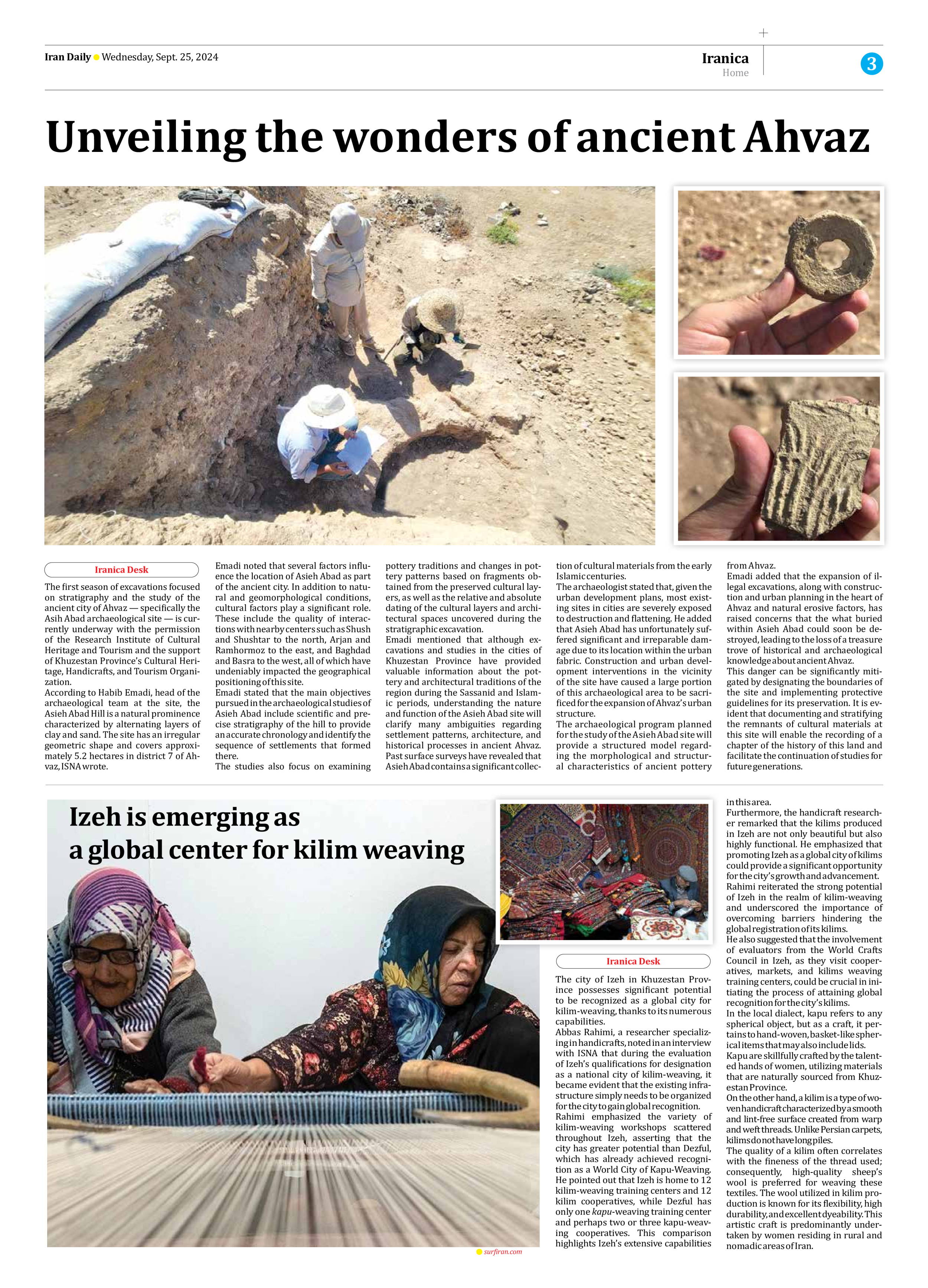
Izeh is emerging as a global center for kilim weaving
The city of Izeh in Khuzestan Province possesses significant potential to be recognized as a global city for kilim-weaving, thanks to its numerous capabilities.
Abbas Rahimi, a researcher specializing in handicrafts, noted in an interview with ISNA that during the evaluation of Izeh’s qualifications for designation as a national city of kilim-weaving, it became evident that the existing infrastructure simply needs to be organized for the city to gain global recognition.
Rahimi emphasized the variety of kilim-weaving workshops scattered throughout Izeh, asserting that the city has greater potential than Dezful, which has already achieved recognition as a World City of Kapu-Weaving. He pointed out that Izeh is home to 12 kilim-weaving training centers and 12 kilim cooperatives, while Dezful has only one kapu-weaving training center and perhaps two or three kapu-weaving cooperatives. This comparison highlights Izeh’s extensive capabilities in this area.
Furthermore, the handicraft researcher remarked that the kilims produced in Izeh are not only beautiful but also highly functional. He emphasized that promoting Izeh as a global city of kilims could provide a significant opportunity for the city’s growth and advancement.
Rahimi reiterated the strong potential of Izeh in the realm of kilim-weaving and underscored the importance of overcoming barriers hindering the global registration of its kilims.
He also suggested that the involvement of evaluators from the World Crafts Council in Izeh, as they visit cooperatives, markets, and kilims weaving training centers, could be crucial in initiating the process of attaining global recognition for the city’s kilims.
In the local dialect, kapu refers to any spherical object, but as a craft, it pertains to hand-woven, basket-like spherical items that may also include lids.
Kapu are skillfully crafted by the talented hands of women, utilizing materials that are naturally sourced from Khuzestan Province.
On the other hand, a kilim is a type of woven handicraft characterized by a smooth and lint-free surface created from warp and weft threads. Unlike Persian carpets, kilims do not have long piles.
The quality of a kilim often correlates with the fineness of the thread used; consequently, high-quality sheep’s wool is preferred for weaving these textiles. The wool utilized in kilim production is known for its flexibility, high durability, and excellent dyeability. This artistic craft is predominantly undertaken by women residing in rural and nomadic areas of Iran.







